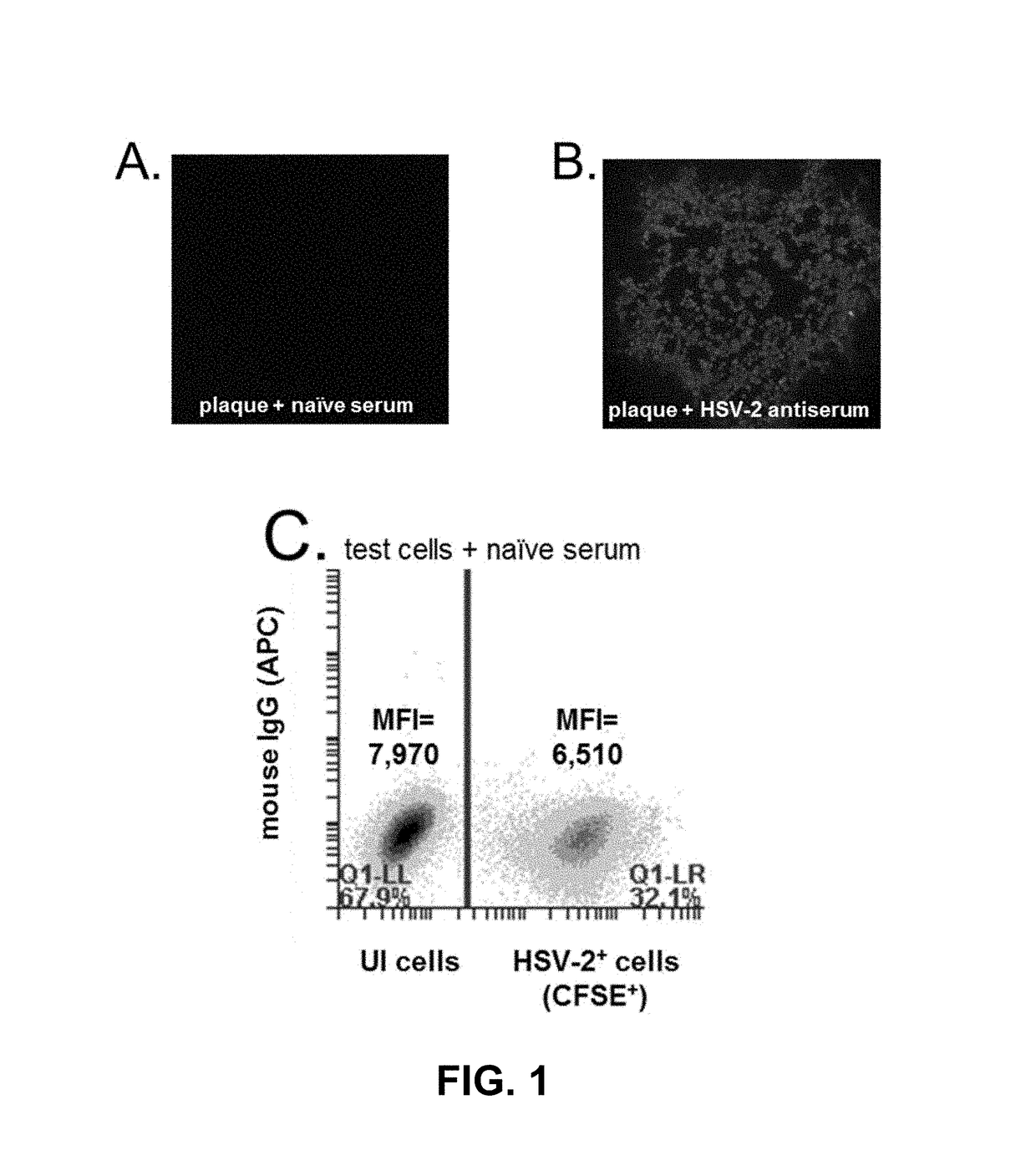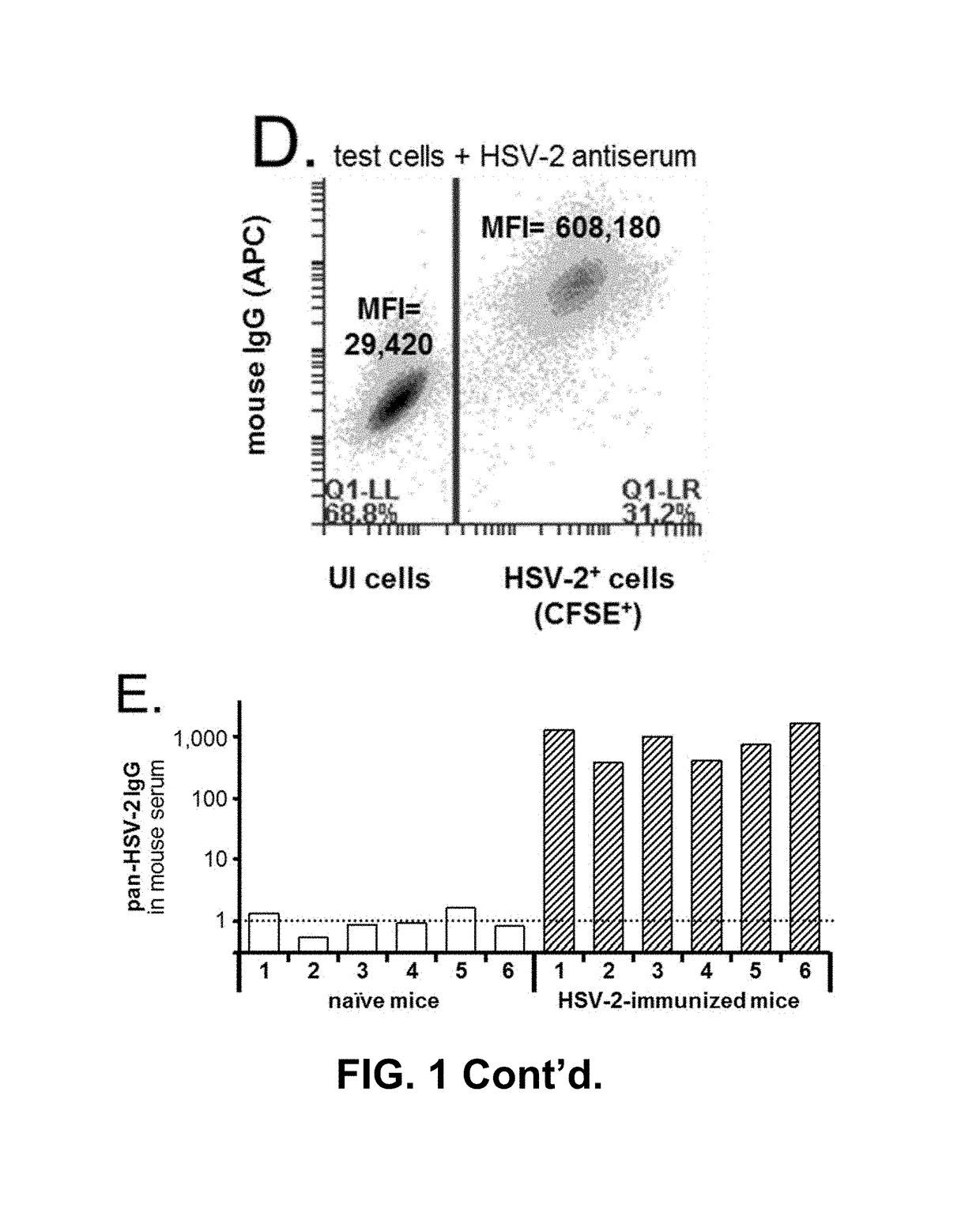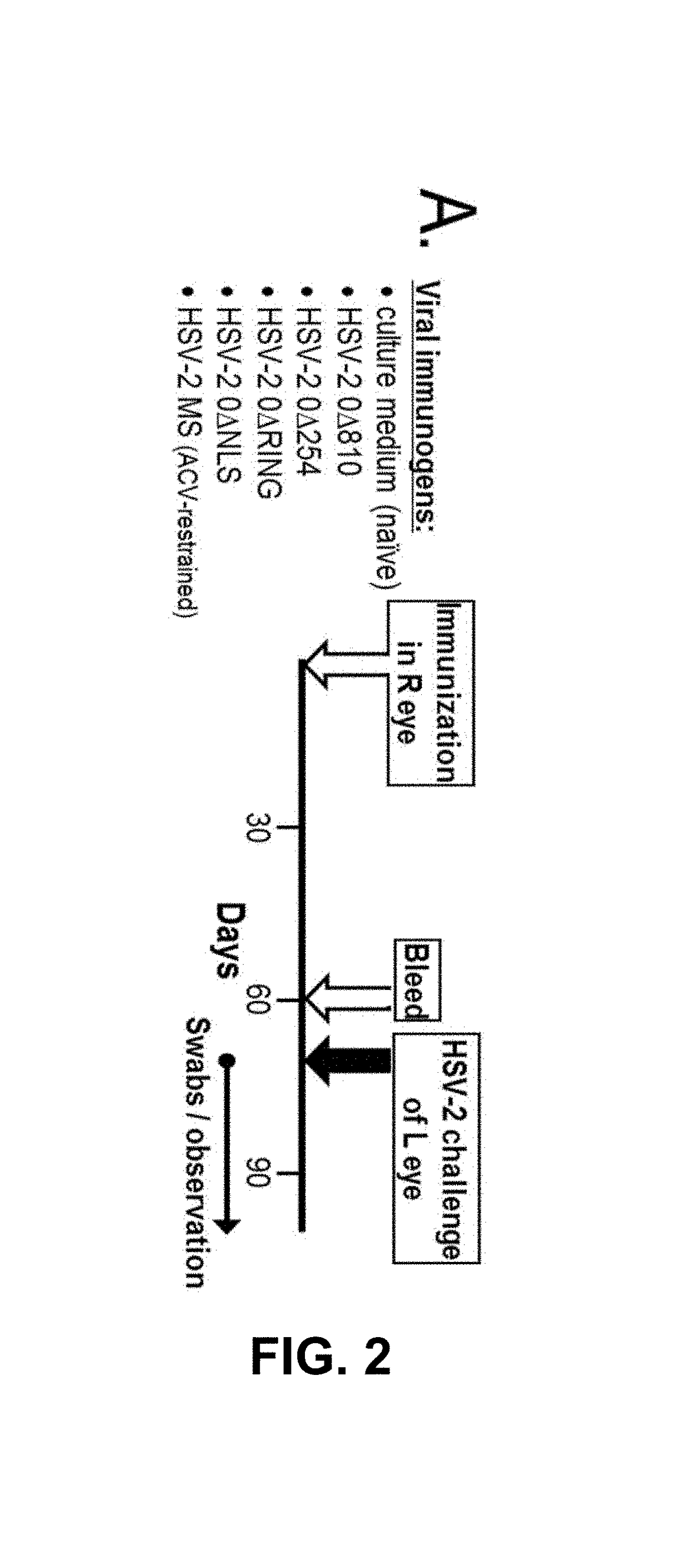Rapid and sensitive serological assay to determine if patients are infected with herpes simplex virus type 1 HSV-1 and/or type 2 HSV-2
a serological assay and sensitive technology, applied in the field of sensitive serological assay to determine if patients are infected with herpes simplex virus type 1 hsv1 and/or type 2 hsv2, can solve the problems of blot testing failing to resolve the serological status of about 50 patients, western blot testing typically returns indeterminate results for these patients, etc., to achieve the effect of increasing sensitivity and quantitative power
- Summary
- Abstract
- Description
- Claims
- Application Information
AI Technical Summary
Benefits of technology
Problems solved by technology
Method used
Image
Examples
Embodiment Construction
[0083]The present invention contemplates an assay that can detect and differentiate between infection by one or both or neither of HSV-1 and HSV-2 for the purposes of disease diagnosis from a subject serum sample. One preferred illustrative embodiment contemplates a three cell population assay that is referred to herein as a flow cytometry-based serological assay that measures the virus type-specific affinity of serum antibody-binding to virus-infected cells (ABVIC).
[0084]The present invention contemplates use of an antibody-containing sample from a patient whose infection status with one, the other, both or none of HSV-1 and HSV-2 is to be determined. Usually, that sample is in the form of serum or plasma from a blood draw sample. The sample can also be an antibody-enriched sample such as an ammonium sulfate precipitate from a blood or other sample as are well known, or from a dried, e.g. lyophilized, serum or plasma sample. For convenience and because of their similarity, serum an...
PUM
| Property | Measurement | Unit |
|---|---|---|
| time | aaaaa | aaaaa |
| time | aaaaa | aaaaa |
| wavelengths | aaaaa | aaaaa |
Abstract
Description
Claims
Application Information
 Login to View More
Login to View More - R&D
- Intellectual Property
- Life Sciences
- Materials
- Tech Scout
- Unparalleled Data Quality
- Higher Quality Content
- 60% Fewer Hallucinations
Browse by: Latest US Patents, China's latest patents, Technical Efficacy Thesaurus, Application Domain, Technology Topic, Popular Technical Reports.
© 2025 PatSnap. All rights reserved.Legal|Privacy policy|Modern Slavery Act Transparency Statement|Sitemap|About US| Contact US: help@patsnap.com



